
Breaking down breakout boards (and how to use them)
Reading time: about 3 min
Topics:
Key takeaways
- Add structure and organization to your canvas: Lucid’s infinite canvas is great for big ideas, but with large groups, it can become chaotic. Breakout boards are a structured way to organize collaboration and boost creative energy.
- Boost engagement and innovation: 36% of people say that poor collaboration is a major barrier to innovation. Breakout boards split large groups into smaller, focused teams, ensuring every voice is heard.
- Breakout boards are the answer: Use breakout boards to maintain a clean record of recurring meetings, brainstorm in private spaces, and connect with teammates in a smaller group.
Lucid’s infinite canvas makes it easy to bring big ideas to life. Whether you’re hosting large groups, facilitating activities, or running planning sessions, Lucidspark’s features make collaboration seamless. But sometimes, boards with lots of information can lead to disorganization, distraction, and disengaged participants.
That’s where breakout boards come in. They transform your canvas from chaotic to curated, giving you a structured way to guide collaboration and maintain creative energy.
And with 36% of workers reporting that poor collaboration is one of the main barriers to innovation, it’s more important than ever to make sure we are creating environments that promote effective collaboration with our groups.
In this article, we’ll explain what breakout boards are and when to use them. You’ll learn how to maximize the value of the Lucidspark canvas while harnessing the power of smaller groups.
What are breakout boards?
Breakout boards are sub-boards attached to a Lucidspark board. They are great for quickly dividing large groups and compartmentalizing content for maximum collaboration and organization.
Did you know: You can create up to 50 breakout boards from one Lucidspark board!
To access breakout boards from your Lucidspark canvas, navigate to the panel on the left-hand side and select the + icon.
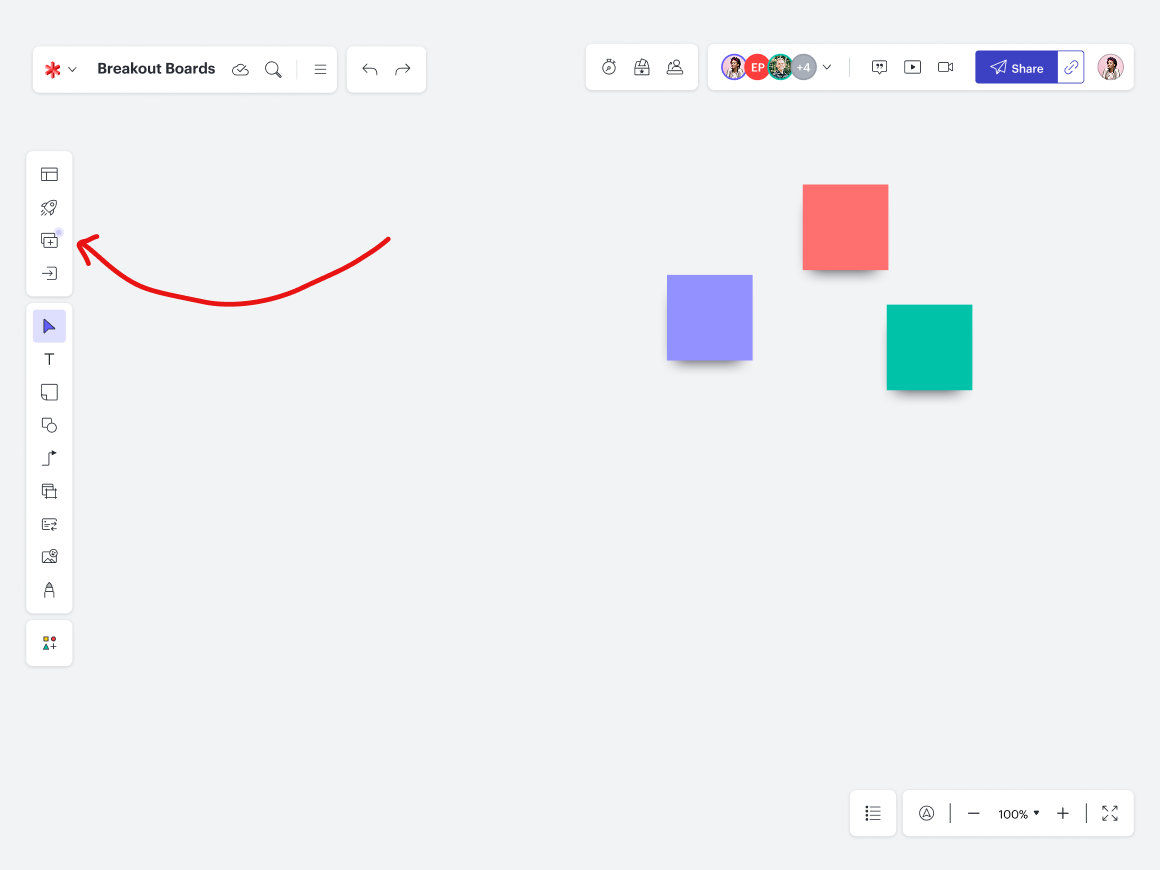
From there, you can name your breakout board and invite participants directly to that board for your next session.
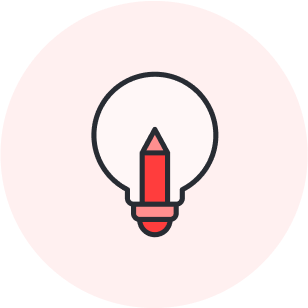
Explore our full help center article to learn more about breakout boards.
Read moreWhen to use breakout boards
There are many great use cases for breakout boards. Let’s dive into the most popular ones.
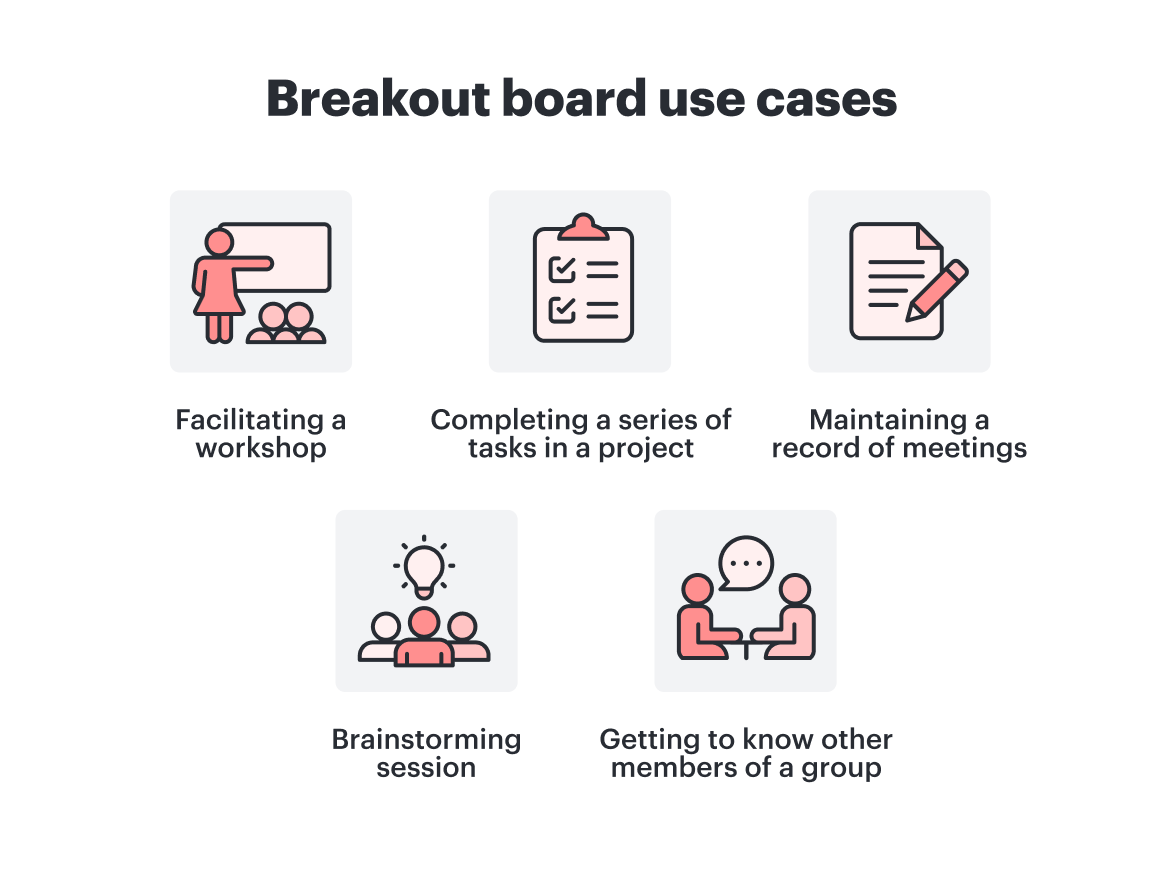
Facilitating a workshop
Leading a workshop with a large group can present a challenge in ensuring all participants are engaged with your content. Breakout boards address this challenge by allowing you to break up the larger group for discussions and activities. Depending on the nature of your workshop, you can have people choose which breakout room to attend, or rotate through speakers in a session, allowing each speaker to put their notes in separate boards so their info stays distinct and organized.
Pro tip: Set a timer for your groups to complete a task, and then you can call everyone back to the main board by clicking Back in the upper left-hand corner of your canvas.
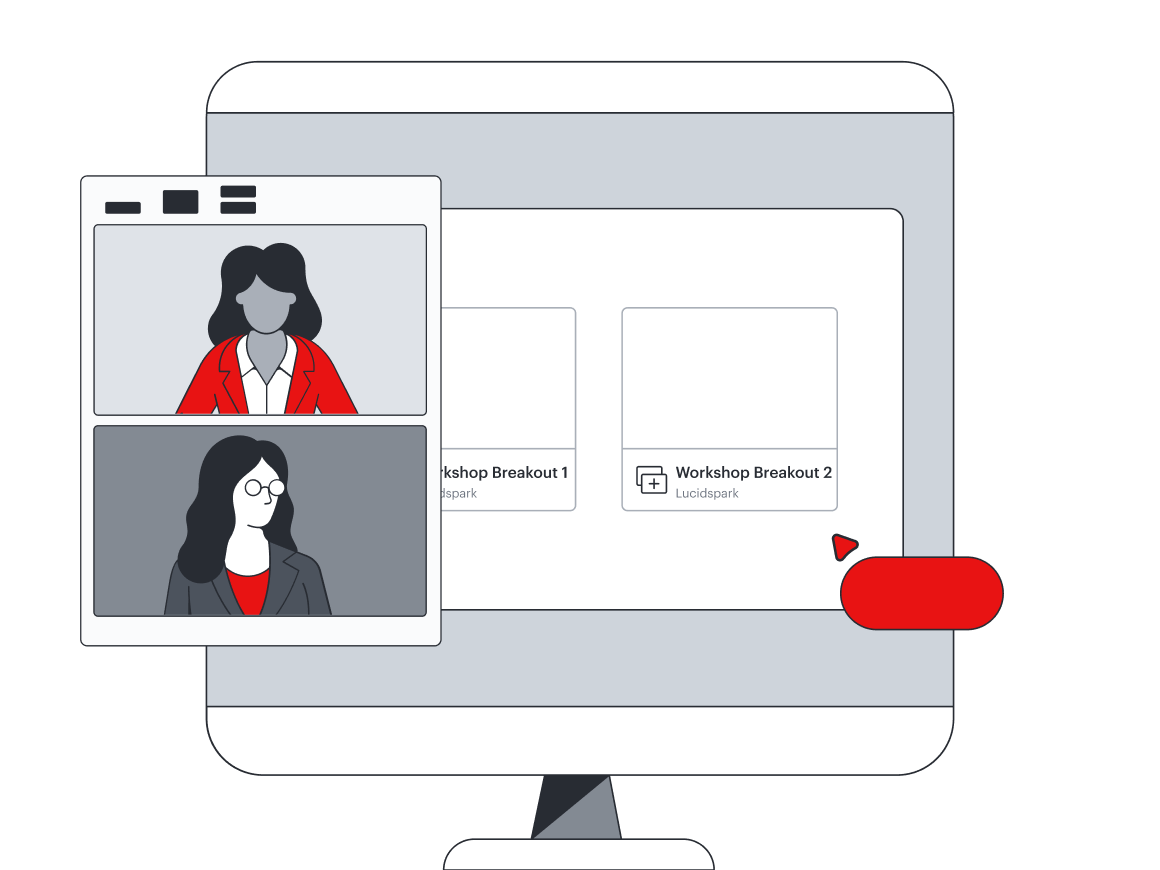
Completing a series of tasks in a project
When managing complex projects with multiple tasks, the main board can quickly become cluttered with sticky notes, documents, and frames, making it difficult to get a clear picture of what’s happening. The main canvas serves as a high-level project roadmap, while individual breakout boards can stand in for the more granular tasks like brainstorming and research.
This will help your team stay visually organized and laser-focused on the tasks at hand.
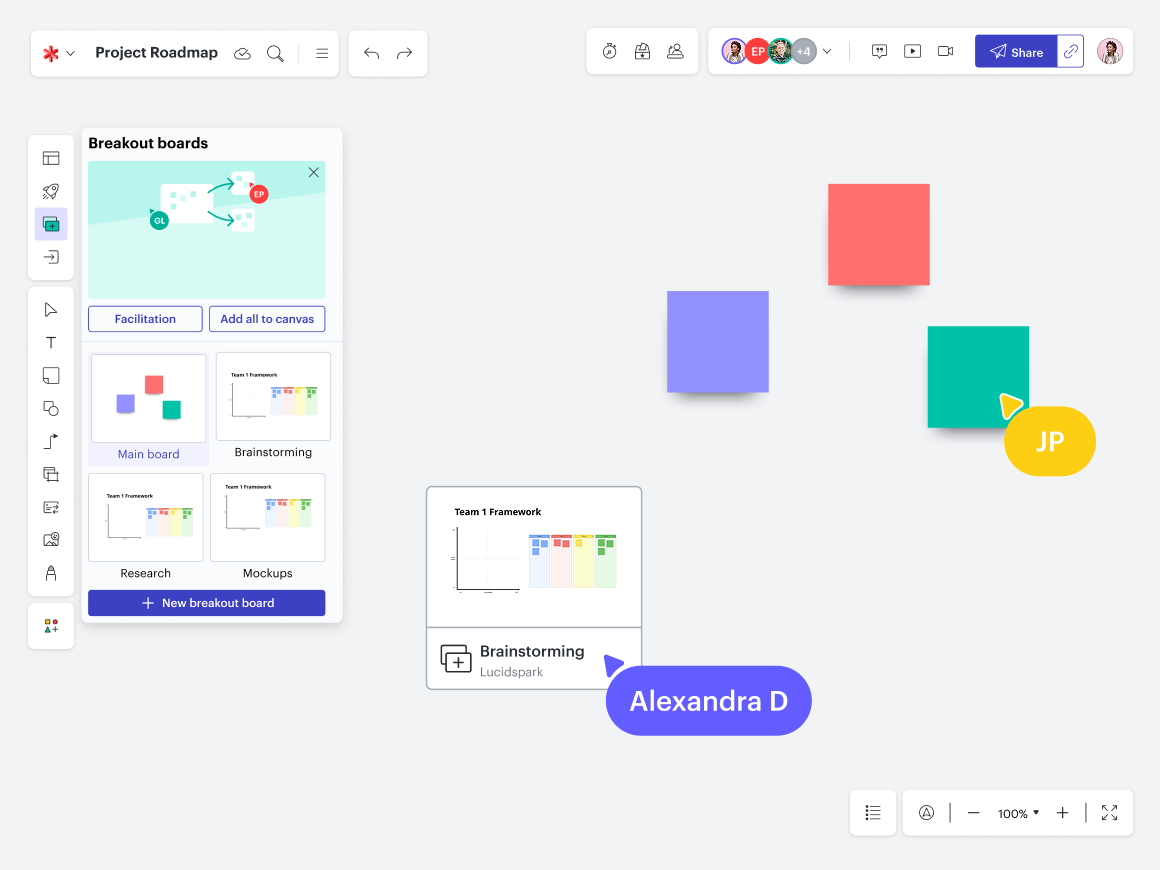
Maintaining a record of meetings
If you have ongoing meetings, like a weekly sprint or a daily standup, your Lucidspark board can quickly fill up. Rather than starting a new board every time, use a breakout board for each session. By dating each board, you can easily create a clean, organized archive of your meetings. This not only keeps your main canvas tidy but also serves as a record of past discussions and decisions.
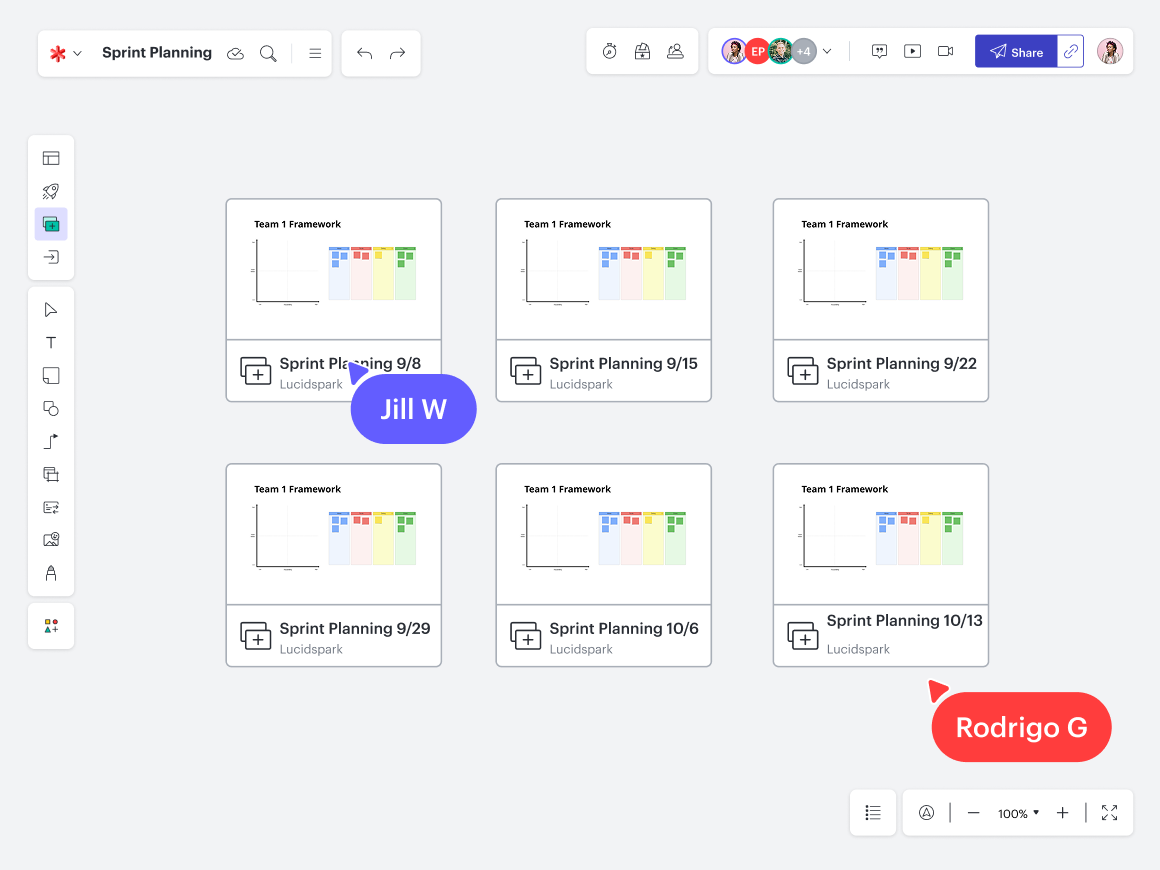
Brainstorming with large groups
Hosting a brainstorming or ideation session? Make sure everyone’s voice gets heard by breaking large groups down into teams or partnerships. This approach provides a dedicated space for focused creativity while encouraging participation.
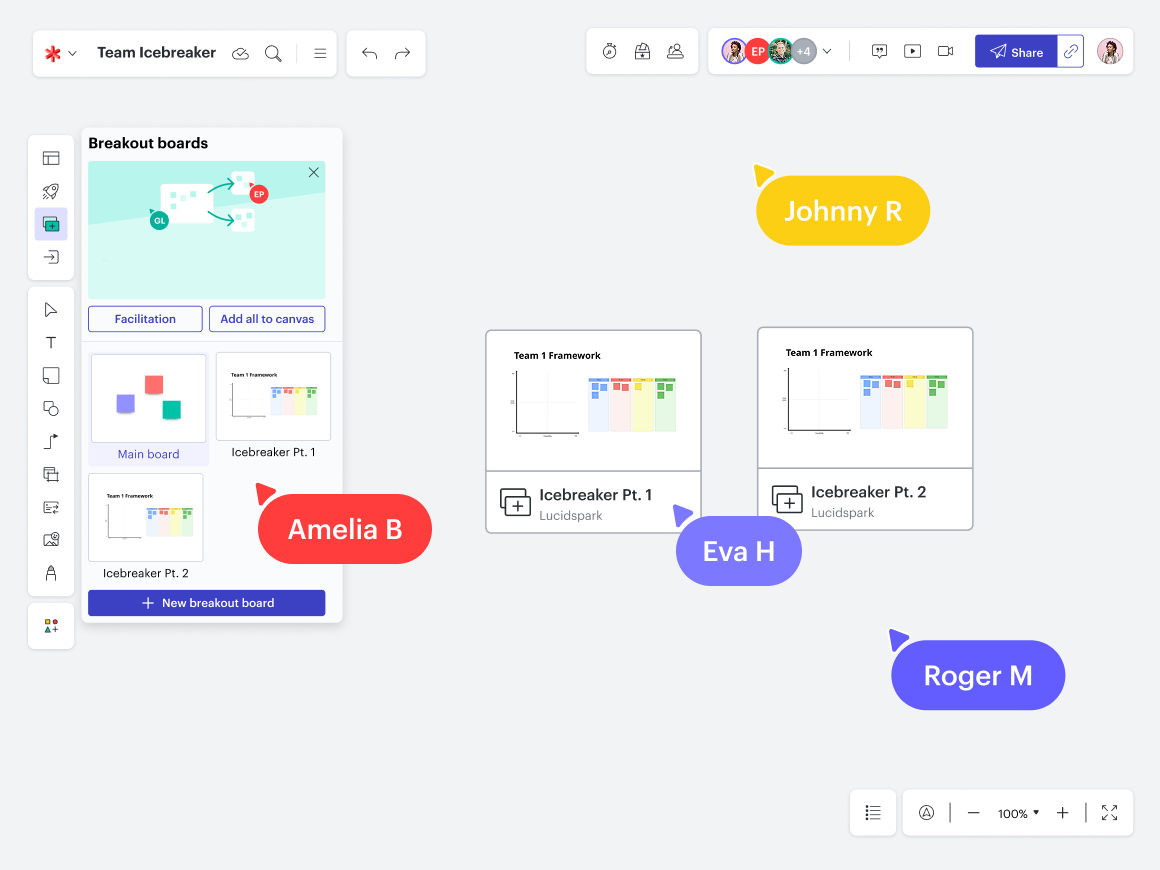
Getting to know other members of a group
In a large group setting, its often difficult for people to truly get to know one another. Breakout boards make this possible by providing a chance to complete an ice breaker, workshop through an scenario, or simply have a quiet moment to forge deeper connections.
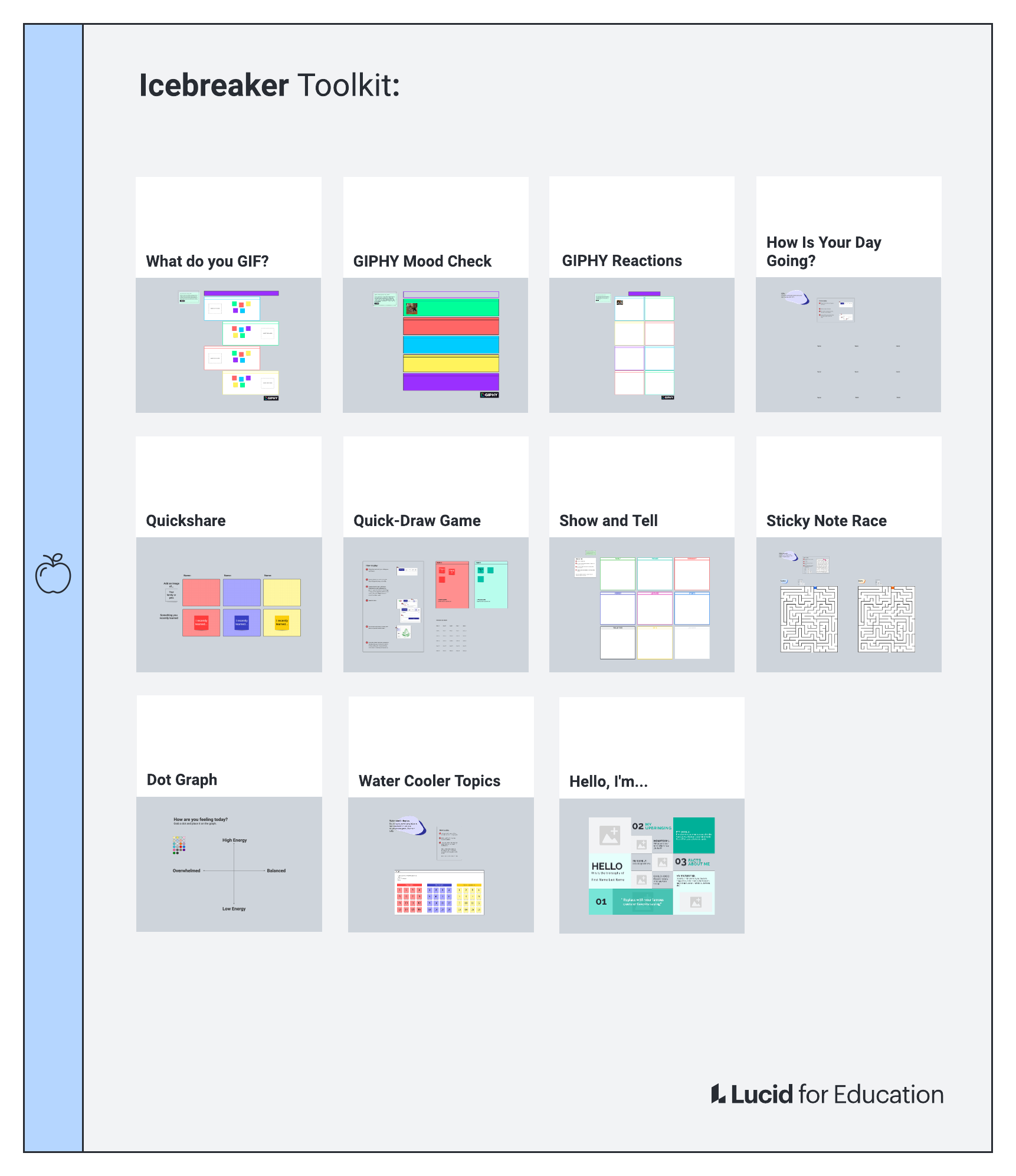
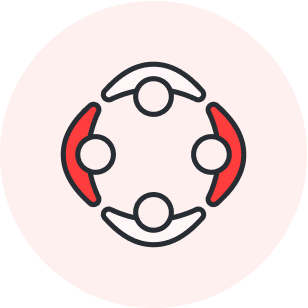
Learn five brainstorming techniques to spike innovation on your team.
Read nowAbout Lucid
Lucid Software is the leader in visual collaboration and work acceleration, helping teams see and build the future by turning ideas into reality. Its products include the Lucid Visual Collaboration Suite (Lucidchart and Lucidspark) and airfocus. The Lucid Visual Collaboration Suite, combined with powerful accelerators for business agility, cloud, and process transformation, empowers organizations to streamline work, foster alignment, and drive business transformation at scale. airfocus, an AI-powered product management and roadmapping platform, extends these capabilities by helping teams prioritize work, define product strategy, and align execution with business goals. The most used work acceleration platform by the Fortune 500, Lucid's solutions are trusted by more than 100 million users across enterprises worldwide, including Google, GE, and NBC Universal. Lucid partners with leaders such as Google, Atlassian, and Microsoft, and has received numerous awards for its products, growth, and workplace culture.
Related articles
The benefits of small group work during meetings
Let's look at how group work can make meetings more productive, what small group work looks like, the benefits of small group work, and how to facilitate group work during meetings.
Bridging the alignment gap: Survey uncovers key factors affecting organizational productivity
37% of workers believe team alignment can be improved in their organizations. See other results from our alignment survey.
Master the skill of collaboration for ideation
We’ll explore the course “Collaborate for ideation” and show you how to keep your team engaged during ideation sessions.
How to promote collaboration equity in your organization
Curious about what collaboration equity is, why it matters, and how you can promote it across your organization? Learn more here.
